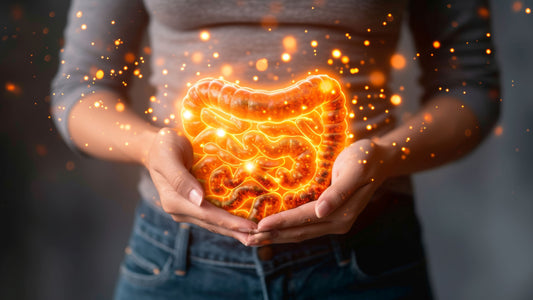
A few years ago I had the opportunity to join Dr. Kathleen O’Neil-Smith and Dr. Angeli Maun Akey on their FB show, FIRRIMupDoctors. We discussed a huge study, called the Women’s Health Initiative, that was funded mostly by the government to help us understand the relationship between hormone replacement therapy and outcomes of those who use HRT.
We are excited to be able to bring you some news about estrogen replacement therapy that people really need to hear! Here are the highlights of our conversation.
All women hate to get a mammogram because they are so uncomfortable. But they give us valuable information that saves lives.
When you think about it, on the one hand, mammograms have been around for a very long time and are a reliable way to look for breast abnormalities. On the other hand, nothing has changed in mammography in so long! It strikes me as a rather archaic way to image the breast, what with all the pinching and squeezing and poking. We do now have much better ways to image the breast including MRIs and thermography and ultrasound. I think it’s important to look at the breast in multiple ways, just like we look at hormones in multiple ways, not just through the blood.
There is a bit of a controversy between the American College of Radiology, the American College of Physicians, and the American Cancer Society about how often a woman should get a mammogram. It’s no surprise that the American College of Radiology suggests that women get their breasts imaged annually, while the other organizations, including the European Cancer Society, recommend that it be less often.

When I heard the latest statistic that visits to the doctor, including getting a mammogram, have dropped 95%, I was amazed! So I dug into some research to find out what sorts of new insights I might gain about breast health.
That’s when I discovered research from July 2020 by the American Medical Association. The article, published in JAMA, explains that there are some important new developments in our understanding of the association between estrogen plus progestin, or estrogen alone, with the incidence of breast cancer and breast cancer mortality.
The study looked at 10,739 women in the estrogen-alone trial compared to placebo. The study showed a significantly lower breast cancer risk! Dr. Cheblowski - the main author - published this article to show that offering ERT in the late postmenopausal phase means you will likely have a decreased breast cancer risk. This article should have been front page news! Let me tell you why.
At the time of the original study, published in 2002, if there was no contraindication to HRT, the right answer for a menopausal woman suffering from hot flashes, mood swings, vaginal atrophy, brain fog, and more, was to put her on hormones. Unfortunately, the standard at the time was CEE, conjugated equine estrogens, which is from pregnant horse’s urine, hence the name Premarin. That’s not the kind of estrogen we know in our bodies! They also used a synthetic progestin called MPA. The ERT that was just estrogen is called Premarin. The combination of Premarin and MPA, a synthetic progestin, is called Prempro.

One arm of the study - those women who received Prempro - was stopped prematurely for safety reasons after just 5.6 years because the combined horse estrogen and synthetic progestin caused an increased risk of heart attack, clots, and breast cancer (while also decreasing the risk of colon cancer and hip fracture).
The other arm of the study - women who had had a hysterectomy who were only receiving Premarin was stopped prematurely for safety reasons also, this time in 2004 after just 7.2 years.
At what age should you begin HRT?
In this study, because the women had an average age of 62-63, they were typically 10-15 years after going through menopause. So when you consider the increased risk of heart disease for those women, it actually makes sense; there was likely extra plaque in the arteries that became unstable when estrogen was added.
Now estrogen is prescribed to women during what is called the “estrogen window”; that means you start estrogen earlier in the perimenopausal or menopausal transition. The sooner you start and maintain some level of healthy bioidentical hormone, the better off you’ll be.
There was a time when we only thought we needed progesterone for the uterus. Now we know better. Now we know we need it for: the brain; the bones; the fascia; collagen; healthy memory; a good night’s sleep; and many more! All these and more are impacted by the presence of progesterone.
I’ve been asked, “When am I too old to begin HRT?” I always say that it’s important to consider what your goals are. Consider your brain, your bones, and other areas of health before making the decision. Where are you in the curve of estrogen and progesterone deficient? Calculate this risk with your doctor.
It's not just about your uterus or a good night’s sleep. There’s a lot more to it. Based on the literature, I don’t have an age limit. Based on the client, we look at all the factors, then typically use a transdermal progesterone. My Balance cream is an option here.
Should you take just estrogen?
In the early 1950s whether or not you’d had a hysterectomy, you received Premarin, which was also known as the purple pill, or mommy's little helper, or other nicknames like that.
But then researchers and physicians began to notice that women had an increased risk of endometrial cancer. This risk was due to unopposed estrogen. Because there was no bioidentical progesterone to oppose the estrogen, the lining of the uterus would thicken. It became clear that we needed to oppose the estrogen in the endometrium. That’s how the progestin Provera was originally developed: to oppose the unopposed estrogen.
You need both estrogen and progesterone. During a normal menstrual cycle they help you to be healthy and to be prepared to have a baby. The estrogen thickens the uterine lining, which is why uterine endometrial cancer can be the result when you just use estrogen alone and you still have a uterus.
To balance out the estrogen, you need the progesterone and the withdrawal of the progesterone later in the month in order for the tissue to be shed. If the tissue remains there, it’s as if the cells take on a mind of their own. Based on your genetics and other factors, if you have a propensity toward this with those cells that are not doing what they’re supposed to be doing, you could be more susceptible to getting cancer. Estrogen and progesterone generally work together as a kind of “yin and yang” and keep the body balanced.
However, if you’ve had a hysterectomy and think you may need hormone replacement therapy you should be sure to ask your doctor for both of those hormones, estrogen and progesterone, not just estrogen. And it should be a bioidentical hormone, something known to your body.
Oral or transdermal?
The study looked at oral HRT. Transdermal Premarin didn’t come out until much later. Scientists knew oral estrogens have an increase in inflammatory markers like hsCRP. We know the root of administration also increases the risk of thromboembolic disease and inflammatory markers. It’s important to understand this in the interpretation of these results.
I don’t put any of my patients on oral HRT if they are much over age 50, and we switch if they have any risk of cardiovascular disease earlier in their lifetime. In that case we switch to transdermal and vaginal hormones. We want to avoid the oral route in order to avoid hepatic metabolism and inflammatory consequences.
Even though oral HRT is not my first choice in women over 50 - at all - it shows a significantly decreased risk of breast cancer - when begun at the right stage of life. This whole concept of a better quality of life, lower morbidity and all-cause mortality is fabulous news!
Estrogen is safe!
Most of the news you encounter is anti-estrogen. But in the study, if you had breast cancer and were placed in the estrogen-only arm, there was still a significantly lower breast cancer mortality rate than if you had not had estrogen.
Yet the media and many doctors are still very afraid of using estrogen. My word to those doctors: “Stop villainizing estrogen! It’s misogynistic; it feels like anti-feminine talk.” Doctors have to stop scaring women because we need estrogen, not just for our healthy breasts and healthy bones, but also for better memory and brain health, and to have an improved quality of life. Estrogen is an important factor as fuel for the brain. As I explain in my book, Keto-Green 16, it’s important as fuel for the brain because glucose utilization in the brain is estrogen dependent. When you are deficient in it, it means your brain is actually starving.
When it comes to estrogen replacement, you’re not just looking at the levels you had in your twenties; you want supportive levels of estrogen. And it turns out that a little goes a long way!
In the study, the CEE (horse urine), with 30 different estrogens being metabolized by the liver, the actual percentage of safe estrogen is really quite low to convey a benefit; just 0.625 mg/d. That’s really reassuring too.
You are at your healthiest from ages 12 to 48; that’s when your personal estrogen levels are optimized. The same is true for men with respect to testosterone and the prostate and their PSA levels. None of these hormones should be villainized, because they are what allow us to be healthy!
Progesterone is a male and female hormone that declines with age. It declines rapidly in women ages 35 to 45. We need some of these hormones, so we need to supplement supportive amounts of them in order to keep brains and bones healthy. If these hormones go down to zero and you get to complete deficiency, that’s when you end up with the kinds of diseases that cripple both men and women. For instance, the incidence of heart disease and thromboembolic disease, or brain disease, or memory issues, is as low as it gets when you are at your optimal level of hormones.
You must beware of the hormones that are not bioidentical. These types of hormones are in birth control pills and are affecting our youth who are taking them daily. They’re taking them without a second thought! Yet we know they have negative effects, thanks to this study. When you have a bioidentical alternative that is a safer version of progesterone to use in HRT, use it in perimenopause through postmenopause.

Talk to your doctor
The key take-home point is this: Synthetic progestin has been shown to increase the risk of breast cancer. But the literature is still confusing because they don’t always differentiate synthetic progestins from bioidentical progesterone.
When women say they have pain getting up in the morning or walking, and are just not as limber as they used to be, I encourage them to get onto a keto-green diet, use Mighty Maca, and use bioidentical progesterone if you’re still cycling. And you’ll see these improvements overnight! We’ll also throw in some Julva, my topical DHEA cream for the pelvic floor. We don’t want anything falling out! Also add in my Balance PPR Cream which helps support your bone metabolism as well as your hormone balance. It also improves your body’s response to stress, and promotes a balanced mood.
These quality of life factors make a huge difference in helping people through this transition time of perimenopause and beyond. Your risks continue to increase with gynecological issues like prolapse, incontinence, dryness, and pain and discomfort during sex. So the concept of hormonal content is groundbreaking!
DHEA transdermal hormone
When it comes to the hormone DHEA, I recommend the special topic cream I created called Julva. As I tell people, “Bottom up, clitoris to anus, that’s your prime real estate!” This needs to stay healthy because it affects you the most as you get older and it can be very problematic. Over 75% of women struggle with issues of the pelvic floor if they’re not using preventive methods. These include doing pelvic floor exercises, exercising regularly, and/or an optional hormone therapy like Julva, a transdermal hormone.
Breast cancer literature says that intervaginal DHEA, is very safe, as is vaginal bioidentical estrogen. It leads to a decrease in morbidity as well as in mortality of breast cancer patients. This is something we can do for breast cancer patients!
What do you do now? If you are struggling with symptoms of menopause - low in energy, brain fog, vaginal atrophy, discomfort or pain during intercourse, leaking, mood swings, hot flashes… know that there is relief! According to this extremely large study, if you still have a uterus you want to be taking both bioidentical estrogen and bioidentical progesterone. If you have had a hysterectomy, you may want to be taking bioidentical estrogen, at least.
Once you get the right medication in the right amounts, you’ll be amazed at how much better you feel!
Julva relieves side effects of breast cancer and treatment
Nancy suffered from breast cancer, and then she suffered from the effects of her treatments! But Julva has made all the difference for her! Here’s her story:
|
"They don’t tell you a lot of the post-treatment real side effects of breast cancer. Of course I lost a lot of weight, I was very tired, and it was a big, major ordeal. My fear was the loss of my ability to participate in activities like golf. My breast cancer was estrogen positive, so this type of cancer strips all the moisture from your system. Your hands get dry, everything dries up. And I went to my primary care physician and she said, “Oh Nancy, you have vaginal atrophy.” And I said, “Oh wonderful, I’m 100 years old now!” And I felt like this was just horrible. She said, “There’s nothing I can do for you. Bless your heart, I love you to death but you need estrogen treatment and I can’t give you estrogen treatment because of your history of positive estrogen cancer.” So I tried things like coconut oil, Vagisil, and I kept getting recurring yeast infections and was just generally uncomfortable. Another side effect they don’t tell you about is the loss of libido. Loss of my breast tissue was not that big a deal, but there’s a lot of loss of sensation and loss of sexuality they don’t tell you. Because their goal is to save your life! But I’ve been using Julva for a few weeks now and this makes such a difference! The underlying, constant irritation and uncomfortableness is gone! " |
I am excited to be able to help women in all stages of life. If you are suffering from breast cancer, you don’t have to accept, “There’s nothing I can do for you”! Give Julva a try!



